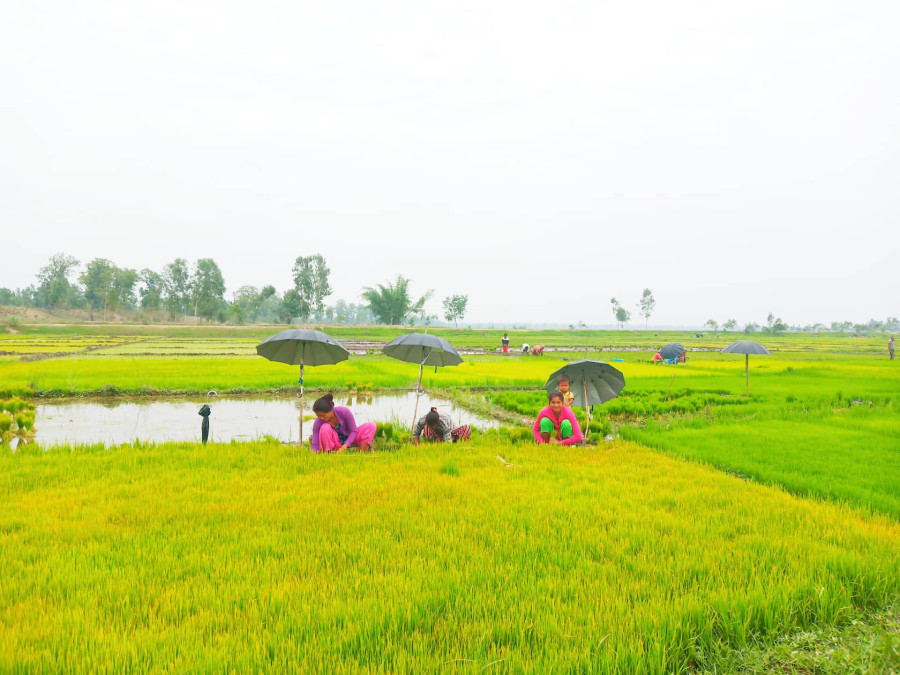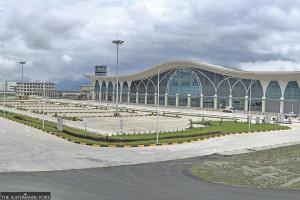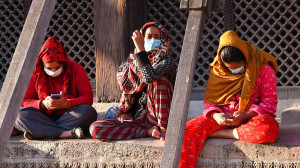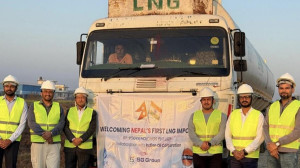Money
Farmers worry as monsoon stalls over Bay of Bengal
Weathermen say the rains will likely arrive this weekend. However, it will take a few more days for it to spread all over Nepal
Nirmala Khadayat & Sangam Prasain
Farmer Batu Devi Balayar of Dhangadhi is worried about her paddy crop. The paddy saplings are in danger of drying up in the seed beds before they can be transplanted because the monsoon rains are running late this year.
The saplings can be transplanted only when the fields are flooded. “Last year at this time, my paddy field had already turned green,” the 60-year-old farmer said. “This year, it’s difficult to protect the saplings in the seed beds.”
Balayar said that farmers who have irrigation facility had started transplantation, but many farmers who rely on the skies are largely worried this year. “If there are no rains for a few more days, all saplings will get dried up.” Many farmers in Kailali are waiting for rain. For many of them, the monsoon rains are not their only worry this year. They are also facing a shortage of chemical fertiliser.
Another farmer Purnia Chaudhary of Kailali said she reaped a bumper paddy harvest last year as the transplantation was completed on time. She doesn’t know what will happen this year. Some farmers are optimistic because the skies have turned cloudy, and they expect the rains to come pouring down soon.
The Department of Hydrology and Meteorology said that the monsoon was ‘likely’ to arrive in the eastern region by the end of this week, nearly two weeks after its normal onset date, giving respite to farmers.
Paddy is planted on nearly 1.5 million hectares of land. The Nepali economy is heavily dependent on the agriculture sector, and farming activities will get delayed right from the sowing of seeds to the transplanting and harvesting. The monsoon is the lifeblood of Nepal’s Rs3-trillion economy as nearly two-thirds of the farmlands are rain-fed.
Archana Shrestha, spokesperson for the Department of Hydrology and Meteorology, said that conditions were becoming favourable for the advancement of the monsoon from the Bay of Bengal. “The wind pattern over the Bay of Bengal has also changed,” she said. “Based on the wind pattern, the monsoon is expected to arrive by the end of this week. However, it will take a few more days for it to spread all over Nepal.”
The monsoon rains are expected to be ‘below normal’ in Nepal’s key crop producing regions this year, according to the report of the South Asian Climate Outlook Forum, dampening prospects of higher farm output after three consecutive years of robust economic growth driven mainly by the farm sector.
South Asian experts said Nepal’s monsoon rainfall is likely to be a mix of two patterns this year —below normal in Provinces 1, 2, 3 and 5 and normal in other provinces, according to the consensus statement of the 14th session of the South Asian Climate Outlook Forum released last month.
But weathermen said it was not a worrying sign as below normal usually does not mean a drought-like situation. The below normal rainfall factor depends on the time of rainfall and paddy planting time.
The monsoon delivers 75 percent of the rains that fall annually in the country. The normal onset date of the rains is June 10. It takes a week to spread throughout the country and lasts till September 23.
Last year, the monsoon entered Nepal from the east on June 8, two days ahead of schedule. The normal monsoon lasting throughout the four-month season yielded a bumper summer crop that led the country to a higher economic growth path. Nepal’s agriculture sector is expected to grow 5.1 percent in the current fiscal year, a sharp rise from its 2.7 percent growth rate in the last fiscal year. The increase has been attributed to the better-than-expected monsoon last year.
Nepal’s paddy harvest is expected to hit a record high of 5.61 million tonnes, up 9 percent from the previous year, according to the Ministry of Agriculture and Livestock Development. Ministry officials said that the good monsoon increased paddy productivity by 3.76 tonnes per hectare. As a result of the good harvest, the country’s economy is projected to grow 7 percent this fiscal year ending mid-July.
Past data has indicated a positive correlation between the actual rainfall and the growth rate of the agriculture sector.
Yubak Dhoj CG, secretary at the Ministry of Agriculture and Livestock Development, said that due to the delayed rains, paddy transplantation has been hit and could affect production by 5 percent. “If the same situation prevails for the next two weeks, it can significantly affect production.”
He said that farmers have been widely using the high yielding varieties of seeds and modern technology nowadays but irrigation has always been a major concern.
GC admitted that there has been a shortage of chemical fertiliser particularly diammonium phosphate (DAP) in major paddy producing areas but the government is doing its best to ensure the farm vital inputs.
He said that the Agriculture Inputs Company and Salt Trading Corporation that deals with fertiliser trade have a combined stock of 10,000 tonnes of DAP only. “We are short of 10,000 tonnes of DAP right now,” he said. However, there is no shortage of urea.
He said that 30,000 tonnes of DAP would arrive to Nepal within 15 days. “The remaining fertiliser consignments will arrive soon.”




 18.12°C Kathmandu
18.12°C Kathmandu














%20(1).jpg&w=300&height=200)
